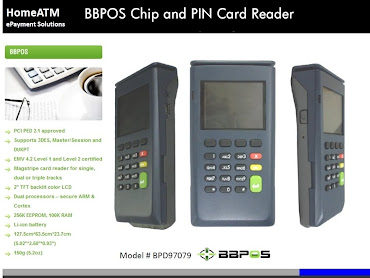Epoch Times - Plastic Nation: Canadians Drowning in Credit Card Debt
Roughly 50 per cent of Canadians are unable to pay off their credit cards every month according to Credit Canada, a non-profit agency that provides free credit counselling.
Debt loads have been increasing steadily since 1990, and by 2007 the average Canadian was in debt to the tune of $80,000, mortgages included.
“Canadians have a ferocious appetite for credit and for debt like our American cousins, and the result is that it’s not sustainable,” says Laurie Campbell, executive director of Credit Canada.
“People have put themselves in this situation where they’ve got cars on lease or on loan, they have a huge mortgage on their homes and they may have $30,000 to $40,000 on lines of credit and unsecured debts such as credit cards and that’s just not sustainable.”
Students are in an equally bad situation, graduating with the highest debt loads they’ve ever had, and it’s not just a result of high tuition fees, Campbell says.People have put themselves in this situation where they’ve got cars on lease or on loan, they have a huge mortgage on their homes and they may have ,000 to ,000 on lines of credit and unsecured debts such as credit cards and that’s just not sustainable.
“Students have large credit card debt on top of their student loan and they can least afford this type of debt because they’re generally not working during school and they come out of school with these grand ideas of getting the perfect job, but often end up with a $15/hr job and they can barely make their rent and their living expenses never mind paying back the huge amount of debt.”
In a study on household debt released last year, the Vanier Institute for the Family found that the poorest 20 per cent (2.6 million households) had a net worth of $34 billion. However, their debts came to $40 billion. The richest 20 per cent had debts worth $186 billion but held $3.5 trillion in net assets. The study also showed that the poorest 20 per cent were more likely to have student and vehicle loans and credit card debt.
One of the reasons for rising personal debt may be that, according to some studies, Canadians don’t read the contract that comes with their credit card and are largely ignorant about how the credit system works, George Grass included. “At the time, I didn’t know that 90 per cent of your payment goes on interest and 5 per cent goes on the principle. So it takes a long time to pay off and then of course the interest keeps going up because the debt is not going down very fast,” he says.
Consumer debt is on the rise in many countries. Numbers released by the U.S. Federal Reserve Board showed that household debt in the U.S. topped $2 trillion in 2006, and that doesn’t include mortgages. In Canada in the same year it was $1 trillion.
Astronomically high interest rates are no help, and New Democrat Leader Jack Layton recently criticized the banks for not passing on the full central bank's interest-rate cut to their customers. While it is expected that profits for 2008 will be down, Canada's six banks reported 2007 profits of a record $19.5 billion. “The fact that the banks charge 18 or 19 per cent interest is ridiculous, it’s unjustified,” says Amir Rubin, assistant professor of business at Simon Fraser University.
Rubin adds that while Canada didn’t experience the “sub prime fiasco they had in the U.S., we certainly had a run-up in the pricing of houses and increased level of mortgages, and that probably contributed a lot to the debt levels of the Canadian household.” There is a domino effect from this massive debt load that Canadians are carrying, says Campbell, manifesting in health problems, addictions, marriage break-ups and less productivity in the workplace, to name a few.
Grass says that before he got help from Credit Canada to consolidate his debts and get his monthly payments down to a manageable amount, he was “at the end of my rope and thought of all kinds of crazy things. I became a very miserable person. My nerves were shot.” As for saving for that rainy day instead of relying on credit, Grass says that by the time the bills were paid, there was nothing left over to save. According to the CGA-Canada study, 25 per cent of Canadians do not engage in any type of savings activity, not even for their retirement.
CIBC senior economist Benjamin Tal says savings rates went down because net rates went up. In recent years people were making a lot of money in the stock market and in the housing market, he explains, and this was their way of “passively saving.” “But beyond that, now with the housing market levellng off we will see a situation in which people will go back to old fashioned saving, especially in an economic slowdown,” Tal predicts.
Regarding the economic slowdown and the situation in the U.S., Campbell says that when large numbers of people can’t sustain their home and have to sell, “the whole housing market falls apart.”Canada, she says, must avoid the same scenario.“We have an opportunity to learn from what’s going on down south — we’d better be quick on our feet.”









0 comments